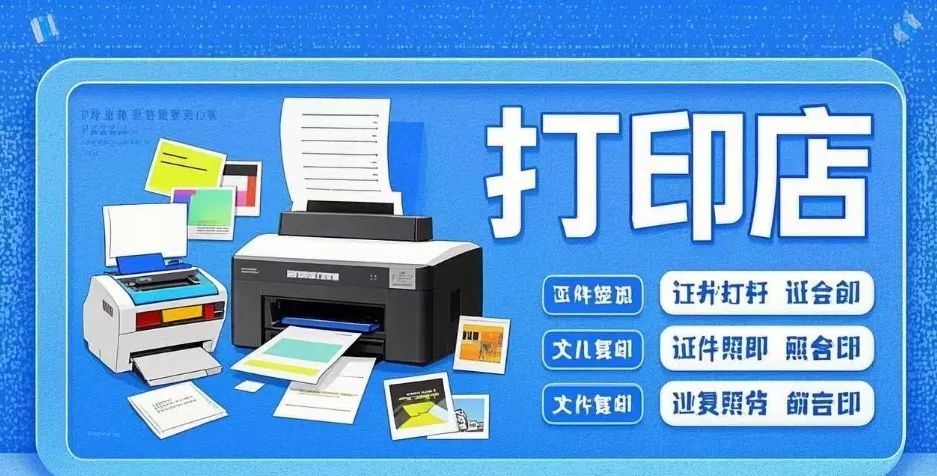Click the arrow and follow us!
How to Connect Printer Devices
1. Preparation


Before starting the connection, please ensure you have prepared the following items:
1. Printer and its accessories: including the printer unit, power cable, USB data cable (if required for wired connection), ink or toner cartridges (if it’s the first use of a new printer).
2. Computer or mobile device: ensure the operating system is up to date to be compatible with most printer drivers.
3. Network environment: If planning to connect wirelessly, ensure the Wi-Fi network is stable and the printer supports this feature.
4. Driver installation media: such as the CD that comes with the printer or the official driver installation package downloaded.
2. Installing the Printer Driver
Step 1: Obtain the Driver
– CD Installation: If the printer comes with a driver CD, insert the CD into the computer and follow the prompts to complete the installation.
– Online Download: Visit the printer manufacturer’s official website, download the corresponding driver based on the printer model. After downloading, double-click the installation file and follow the wizard to complete the installation process.
Step 2: Run the Installer
– Double-click the downloaded driver installation package or the installer on the CD, and the system will pop up the installation wizard.
– Carefully read the license agreement, and continue after agreeing.
– Choose the installation type (usually recommend “Full Installation”), ensuring all necessary components are installed.
– Follow the wizard prompts to select the printer connection method (USB connection or network connection) and operate as instructed.
3. Physical Connection (for USB Wired Connection)
Step 1: Connect the Power Cable
– Insert the printer’s power cable into the power socket on the back of the printer, and connect the other end to the power outlet.
– Turn on the printer power switch and wait for the printer to initialize.
Step 2: Connect the USB Data Cable
– Insert one end of the USB data cable into the USB port on the back of the printer.
– Connect the other end to the USB port on the computer.
– At this point, the computer will usually automatically recognize the new hardware and attempt to install the driver. If the driver has been installed in advance, the system will automatically configure the printer.
4. Wireless Connection Setup (for Wi-Fi Network Connection)
Step 1: Printer Panel Operation
– Depending on the printer model, find the “Network Settings” or “Wireless Settings” menu through the printer control panel.
– Select your Wi-Fi network name (SSID) and enter the password to connect.
– Wait for the printer to connect to the network, usually indicated by a status light.
Step 2: Add Printer on Computer
– Open the “Control Panel” or “Settings” application on the computer.
– Search and click on “Devices and Printers” or “Printers and Scanners”.
– Click “Add Printer” or “Add Device”, and the system will automatically search for available printers.
– When your printer appears in the list, select it and click “Next”.
– Follow the system prompts, which may require downloading and installing additional printer software or drivers.
5. Configuring Printer Properties
Step 1: Set Default Printer
– In the list of installed printers, right-click on your printer icon and select “Set as Default Printer”.
Step 2: Adjust Print Preferences
– In the printer properties window, you can adjust options such as paper size, print quality, and duplex printing.
– Ensure these settings meet your daily printing needs.
6. Print Test Page
Step 1: Send Test Print Command
– Whether through the control panel or the printer settings window, you can find the option to “Print Test Page”.
– Click this option, and the printer will automatically print a test page containing basic information and test patterns.
Step 2: Check Print Quality
– Observe whether the text and images on the test page are clear and the colors are accurate.
– Check margins and alignment to ensure print quality meets requirements.
7. Troubleshooting Common Issues
Issue 1: Printer Not Recognized
– Ensure the USB data cable is connected correctly and not loose.
– Try changing the USB port or using another data cable.
– For wireless connections, check Wi-Fi signal strength and network settings.
Issue 2: Driver Installation Failed
– Confirm that the downloaded driver matches your operating system version.
– Run the driver installation program as an administrator.
– Disable firewall or security software and try installing again.
Issue 3: Poor Print Quality
– Clean the print head according to the printer manual instructions.
– Check the remaining ink or toner levels and replace if necessary.
– Adjust print quality settings in the printer properties.
By following the above steps, you should be able to successfully connect the printer to your computer or mobile device and perform basic configuration and testing. Whether for home office or enterprise environments, proper connection and configuration are prerequisites for efficient printing. Enjoy a convenient printing experience!